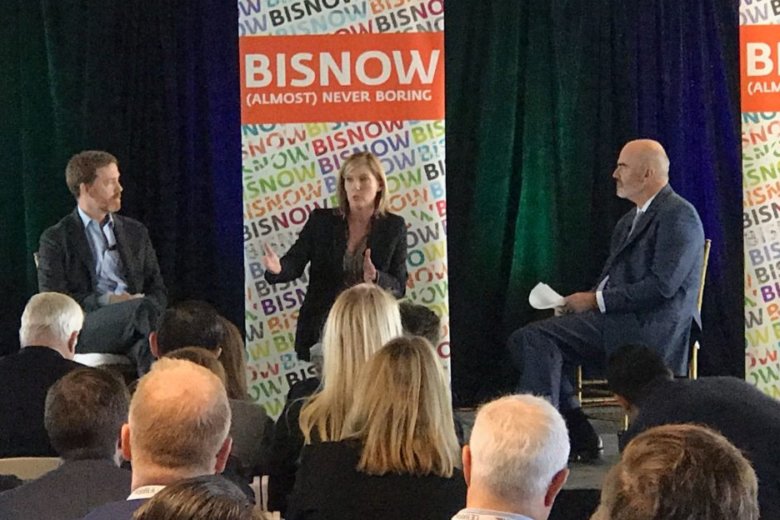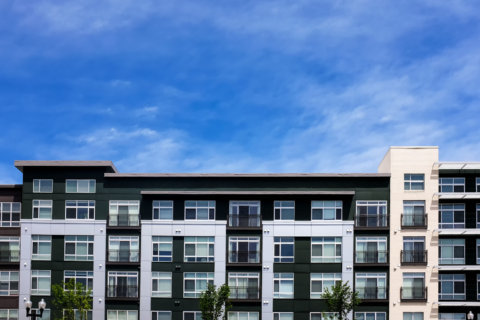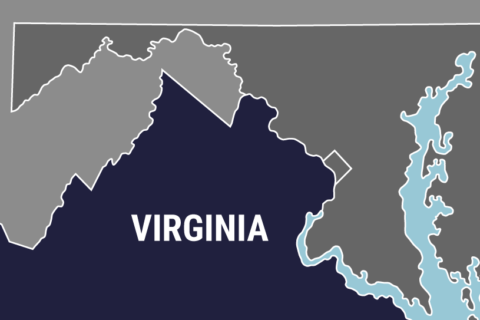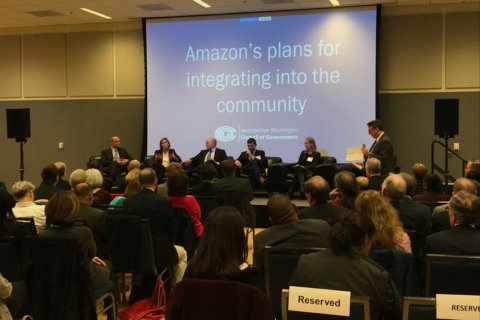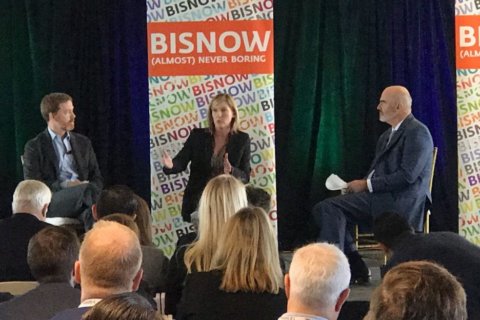
When Amazon first started seriously considering Arlington for a new headquarters, the company went so far as to send employees out to local coffee shops and bars to gauge how people around here felt about the tech giant moving in.
The company’s head of worldwide economic development, Holly Sullivan, says Amazon employees were regularly surveying Crystal City locals about the prospect of becoming the neighborhood’s newest, and largest, occupant. And by the time the tech firm was ready to select Arlington for the project, she had full confidence that Amazon would be greeted with open arms.
“We have a lot of that local knowledge now,” Sullivan assured a crowd of hundreds of business executives and government officials at Bisnow’s HQ2-Apalooza event today (Thursday) in Potomac Yard. “Even before we announced our Arlington plans we felt welcome here.”
That sort of confidence in the community’s response was critical to Sullivan and the rest of the company’s executives — after all, when Amazon officials feared that New York City leaders were insufficiently welcoming for the other half of the company’s headquarters, Jeff Bezos’ firm simply pulled the plug.
“We think we could’ve gotten New York done, but at a certain point you have to ask, at what cost?” Sullivan said. “We want to locate in a community that also supports us.”
The company certainly received a warm welcome at Thursday’s event. Billed as a chance for business leaders to learn “how you can benefit” from Amazon’s arrival in Arlington, the high-priced gathering of executives offered a largely rosy picture of how the company might change the D.C. region.
Of course, not everyone around the county is quite so eager to see Amazon move in, and some of the company’s critics made their presence felt at the otherwise chummy event. A handful of protesters with the “For Us, Not Amazon” coalition temporarily disrupted the proceedings, holding signs and chanting “Pay to play is not okay, we want a public hearing today.”
Sullivan joked that she was glad the event “welcomed some of our friends that like to follow me around the country,” but the demonstration was organized by local activists, who have grown frustrated with Amazon’s approach to engaging with the community.
This is now Sullivan’s second appearance in as many weeks at a ticketed event for local business leaders, and some critics (and even county officials) would rather see the company engage directly with the communities that might be most affected by Amazon’s impact on the region’s housing market.
Sullivan argues, however, that the company has indeed already done some of that outreach work and is committed to doing more. For starters, she says the company plans to create a “steering committee,” pulling together Amazon executives, local government officials and education leaders to discuss the future of the new headquarters and its impact on the region.
Considering that the company has yet to outline any plans for aiding affordable housing efforts in the area, or even what its exact plans for construction in Arlington might look like — the company is still waiting on the County Board to approve an incentive package for the the new headquarters to formalize many of its plans — advocates in the region are enthusiastic to hear that the company is ready to come to the table with local leaders.
“Amazon has an opportunity to create a model of a tech community that is inclusive, that’s different than what we’ve seen in Silicon Valley and Seattle,” said Nina Janopaul, the CEO of the Arlington Partnership for Affordable Housing.
For officials who have long struggled with working across jurisdictional lines, that sort of collaboration could also be quite meaningful, said Stephen Fuller, one of the region’s preeminent economic forecasters.
He argued during the event that Amazon’s promised 25,000 jobs may not put a strain on the region’s housing all on their own, but that the tens of thousands of additional jobs that flood into the area to support Amazon may well challenge the area.
For instance, Fuller’s researchers project that new companies moving into the region to support Amazon could induce demand for as much as 41 million square feet of new office space in the area — for context, Amazon plans to build anywhere from 4 million to 8 million on its own.
“The growth is really coming and we need to take a moment to think about this beyond Amazon,” Fuller said.

